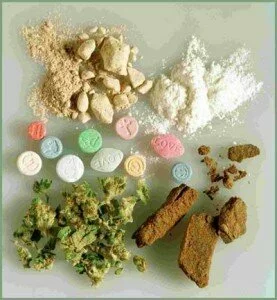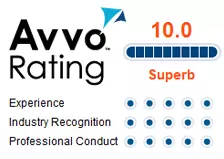
DUI Drugs
In Michigan more people are prosecuted each year for the charge of operating under the influence of drugs. These charges continue to be difficult for prosecutors to prove. This is because unlike alcohol, there are no legal limits for drugs.
In Michigan, there are two ways to prove the charge of OWI – Drugs. The first is to show the mere presence of the drug. This crime is called OWPD (Operating with Presence Drugs). This legal theory applies when a person has any amount (mere presence) of certain types of illegal drugs, including drugs like marijuana, heroin and cocaine.
Another theory for OWI – Drugs in Michigan applies for nearly any other type drug that has any affect on the human body. The only proviso is that prosecutor must show that the drug has impaired your ability to drive or has otherwise caused intoxication. This theory is called OUID (Operating Under the Influence of Drugs) and applies to all prescription and non-prescription (over the counter) drugs.
The problem with most non-presence OWI – Drugs (OUID) cases is that it is difficult or impossible to show that a blood level of a particular drug actually caused any impairment or intoxication. If the prosecutor can’t otherwise prove this, then there can be no conviction.
The trouble comes when a prosecutor tries to suggest (as they often do) that there is in fact a relationship between a blood drug level and intoxication. This is simply not possible. Because of this a prosecutor must show actual driving impairment and show that there is a correlation between the drug and the impairment. Neither is an easy task because there is no legal limit for drugs.
This inability to set a legal limit for drugs is due to the fact that impairment by controlled substances is not nearly as well characterized as with alcohol (i.e. evaluated by way of controlled studies). There are many factors of significance all of which can affect a drugs influence on function. These factors include the dose, time since last ingestion, presence of other drugs (including alcohol) and history of use. Thus, correlating levels of drugs with degree of impairment is subjective.
History of Drugged Driving Laws
In the late 70’s and early 80’s state legislatures began to grapple with the societal issue of drugged driving. Drafting legislation for these drugs was challenging for a number of reasons, including the difficulty in assessing the relationship, if any, between blood levels of specific drugs and impairment. One reason for this difficulty is that there is far less consistency in the human population in both the pharmacokinetics (the manner in which the drug moves through the body) and pharmacodynamics (the impact of the drug on the vital systems, most importantly for this discussion brain function).
In 1983 the National Institute on Drug Abuse sponsored a conference on drugs and driving. The conference agreed to consider the following questions:
- Is ethanol a good model for other drugs?
- What drugs might have a potential for impairing a driver?
- How is driving impairment measured?
- What is known about correlations between driving impairment and drug concentrations?
- Could “per-se” concentrations be established for drugs other than alcohol?
- Can Impairment be established from body fluid concentrations?
The Panel concluded that there was an insufficient body of (scientific) knowledge to allow a state expert to correlate driving impairment and the specific blood levels of various drugs. Additionally, that although it is possible to correlate specific blood alcohol levels to driving impairment it is “not certain” that such correlation can ever be established for drugs that “are now of concern to highway safety.”[i]
In contrast to alcohol, the interpretation of drug concentrations in biological fluids, especially with regard to behavioral effect, requires some knowledge about the dose, the rout of administration, the pattern or frequency of drug use, and the dispositional kinetics (absorption/distribution/metabolism/excretion) of the drug. Interpreting the meaning of either drug/metabolite concentration in a single biological specimen with reference to impaired driver performance is therefore an extremely difficult task for a scientist and even more difficult for a prosecutor. The variables involved create a sufficiently great range of possible interpretations to render any specific interpretation questionable, other than to conclude the individual used a specific drug in the immediate past (days).[ii]
These complicated interacting pharmacokinetic/pharmacodynamic relationships have prevented the establishment of specific levels of drug concentrations, which could be interpreted as “per se” evidence of impairment.
What to do if Charged with Drugged Driving
Many DUI defense lawyers don’t understand the science well enough to really appreciate these subtle but important legal distinctions. If your lawyer doesn’t then you’re in even bigger legal trouble.
As with drunk driving, if you are charged with drugged driving the best thing you can do is find the best lawyer you can afford and fight the case. The likelihood of a wrongful conviction for drugged driving is even higher than it is with drunk driving, but the consequences, including jail time, are the same. This makes your choice of lawyer all the more important.
If you are charged with drugged driving, contact the Barone Defense Firm today for your FREE case evaluation.
[i] Consensus Development Panel, Drug Concentrations and Driving Impairment, J. American Medical Association, v. 254(18) pp. 2618-2621 at 2618 (1985).
[ii] Hawks, R.L., Chiang, C.N., Urine Testing for Drugs of Abuse, NIDA Research Monograph #73, U.S. Department of Health and Human Services, DHHS Pub. No. ADM 870-1481 (1987).










{ 2 comments… read them below or add one }
Great post. Solid points.
The prosecution of DUID cases and especially legally prescribed drug prosecution cases are troubling to me. It is so simple for an well-intentioned but massively under-trained officer at the side of the road to make the wrong call and assume impairment due to contextual bias. They see a pill bottle or the person is acting nervous and next thing you know the officer jumps to the conclusion that the physical or the psychomotor symptomolgy must be due to impairment to the exclusion of all other possible reasons. When some more good old fashioned police work (translated as asking questions) would dispel the suspicion.
____
-Justin J. McShane, Esquire, Pennsylvania DUI Attorney
In Minnesota, police try to bolster their case by having a “Drug Recognition Evaluator” cop do an examination of the driver. Drivers in Minnesota should not cooperate with these field exercises and medical exams requested by police. They are similar but more elaborate than the so-called field sobriety tests requested in alcohol-only cases.
These intolerance laws are absurd, since the presecence of drug metabolites is not correlated with impairment.
Thomas C Gallagher, Minneapolis Criminal Lawyer
{ 1 trackback }